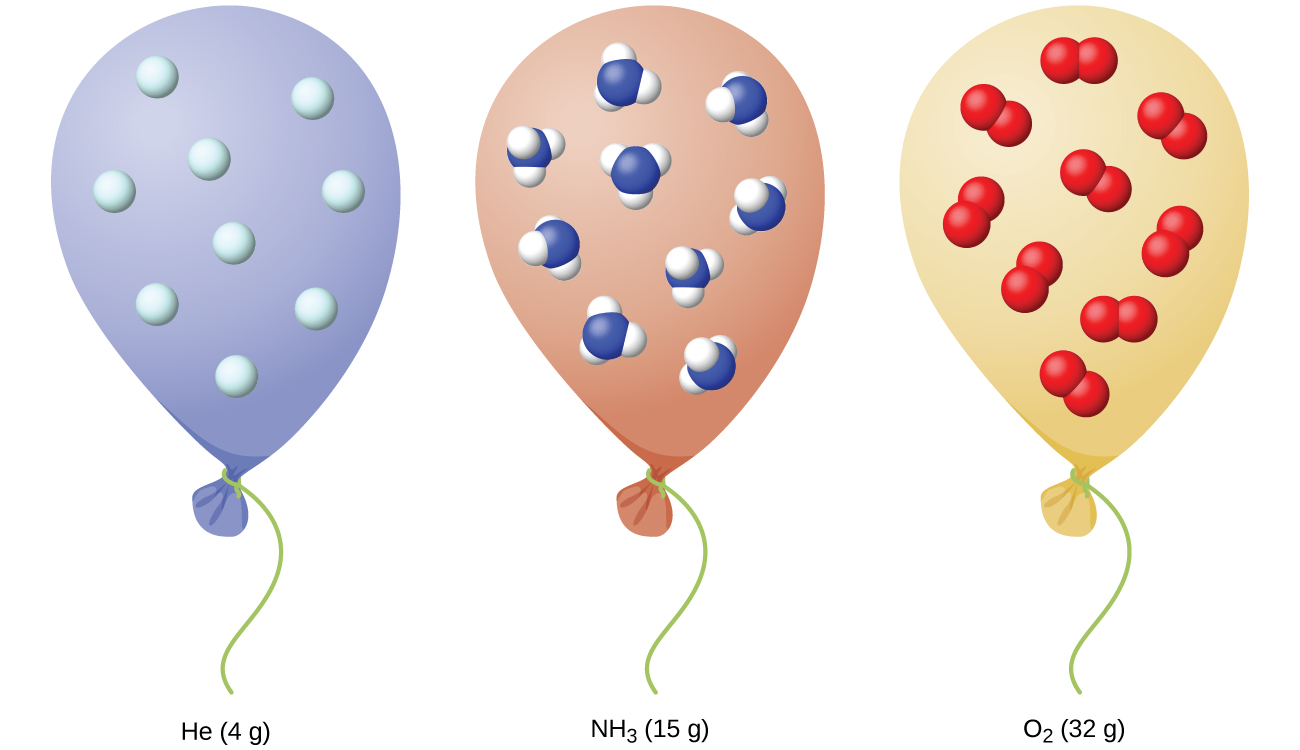| << Chapter < Page | Chapter >> Page > |

The behavior of gases can be described by several laws based on experimental observations of their properties. The pressure of a given amount of gas is directly proportional to its absolute temperature, provided that the volume does not change (Amontons’s law). The volume of a given gas sample is directly proportional to its absolute temperature at constant pressure (Charles’s law). The volume of a given amount of gas is inversely proportional to its pressure when temperature is held constant (Boyle’s law). Under the same conditions of temperature and pressure, equal volumes of all gases contain the same number of molecules (Avogadro’s law).
The equations describing these laws are special cases of the ideal gas law, PV = nRT , where P is the pressure of the gas, V is its volume, n is the number of moles of the gas, T is its kelvin temperature, and R is the ideal (universal) gas constant.
Sometimes leaving a bicycle in the sun on a hot day will cause a blowout. Why?
Explain how the volume of the bubbles exhausted by a scuba diver ( [link] ) change as they rise to the surface, assuming that they remain intact.
As the bubbles rise, the pressure decreases, so their volume increases as suggested by Boyle’s law.
One way to state Boyle’s law is “All other things being equal, the pressure of a gas is inversely proportional to its volume.” (a) What is the meaning of the term “inversely proportional?” (b) What are the “other things” that must be equal?
An alternate way to state Avogadro’s law is “All other things being equal, the number of molecules in a gas is directly proportional to the volume of the gas.” (a) What is the meaning of the term “directly proportional?” (b) What are the “other things” that must be equal?
(a) The number of particles in the gas increases as the volume increases. (b) temperature, pressure
How would the graph in [link] change if the number of moles of gas in the sample used to determine the curve were doubled?
How would the graph in [link] change if the number of moles of gas in the sample used to determine the curve were doubled?
The curve would be farther to the right and higher up, but the same basic shape.
In addition to the data found in [link] , what other information do we need to find the mass of the sample of air used to determine the graph?
Determine the volume of 1 mol of CH 4 gas at 150 K and 1 atm, using [link] .
16.3 to 16.5 L
Determine the pressure of the gas in the syringe shown in [link] when its volume is 12.5 mL, using:
(a) the appropriate graph
(b) Boyle’s law
A spray can is used until it is empty except for the propellant gas, which has a pressure of 1344 torr at 23 °C. If the can is thrown into a fire (T = 475 °C), what will be the pressure in the hot can?
3.40 10 3 torr
What is the temperature of an 11.2-L sample of carbon monoxide, CO, at 744 torr if it occupies 13.3 L at 55 °C and 744 torr?

Notification Switch
Would you like to follow the 'Chemistry' conversation and receive update notifications?